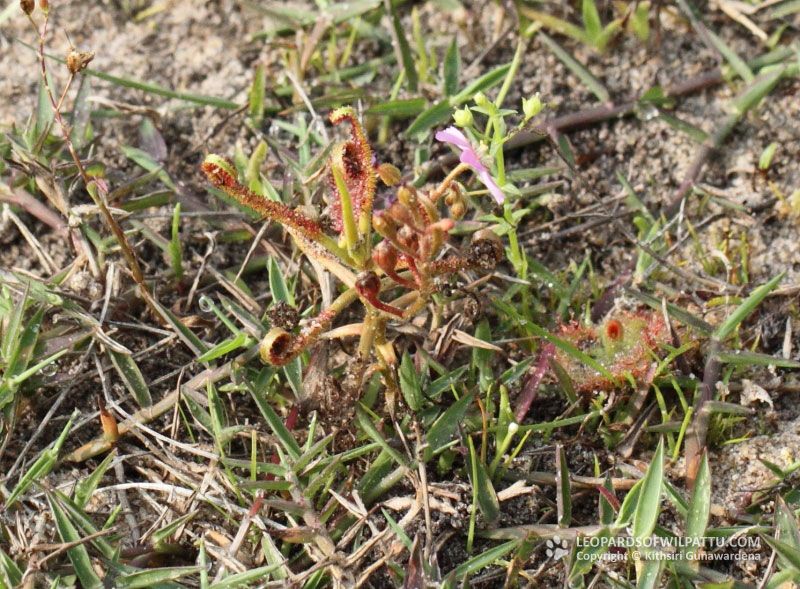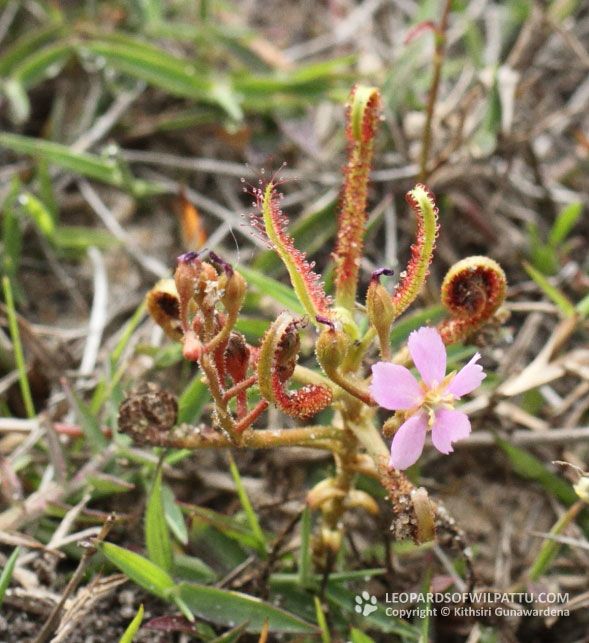
Wild Flowers ‹‹ Go Back
Other than in Sri Lanka this carnivorous plant is found in Australia; Cambodia; China; Ethiopia; India; Indonesia; Laos; Madagascar; Malaysia; Philippines; South Africa; Taiwan; Thailand; Viet Nam; Zambia; Zimbabwe and Australia. These plants grow mainly on localities where the soil is depleted of nutrients due to seepage where nitrogen is almost non-existent. In such soil conditions this annual herb can be found on exposed localities, which enables the sparkling droplets of the plant to stand out for attracting its insect prey. The ability to attract, trap and feed on insects enables this plant to thrive on barren soil where most other plants cannot exist.
The conservation status of the species under reference is regarded as Vulnerable (National Red List 2012).
Kandulessa can be yellow-green to maroon in color and the flower petals are known be white, pink, orange, or purple. The plants in Wilpattu are yellow-green and the flowers are purple in colour.
This plant can be found in the wet and dry zone parts of the country and also in the hills. However they have not been recorded from the cloud forests. It is found in most isolated hills such as Monagagala, Kokagala, Ritigala and Dolukanda. It is also found in Marshlands close to Colombo, such as Bellanwila Attidiya. The life span of this species is less than a month.
In Wilpattu I have observed these plants and flowers of this species in February around the villus after the Kok Mota and Thana Pala plants have dried up exposing the ground hugging short grass, which grows scatted on the sandy soil. These soil conditions and the exposed surface favours these plants to attract their insect prey. Kadulessa however, is not as common as Watassa Drosera burmannii in Wilpattu but can be seen growing in proximity to them in open grasslands around the villus. I once observed a tiny flying insect alighting on one of these plants at Mahapatessa. As I watched the arm covered with the droplets curled up trapping the insect. I have observed these plants during end January and February at Kokkare Villu and Mahapatessa.



